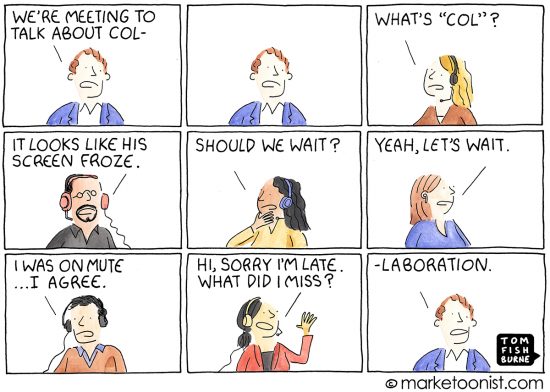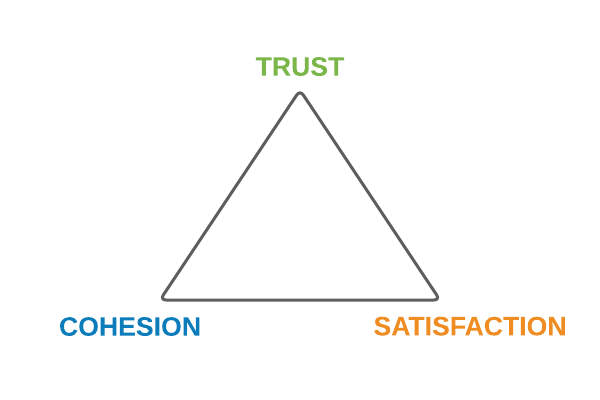
Cartoon by Tom Fishburne
THE MISSION – MAKE VIRTUAL TEAMS #BETTER
We are doing all so many meetings now online, rather than in person.
We know from a plethora of research that working virtually is less effective than being in person.
Why? We think this is less about poor audio or video and more about how we connect with each other.
So, we’re asking: what can we do, in our tool designs, to better engage our internal processes that are fired up when we work together in the same place/time? Is it possible to simulate to such a degree that it really is like being together, and what kind of difference will that make to our collaborations? and how we feel?
The META of Meetings
Our approach to exploring better collaboration, better interacion when online, is to look at what’s happening before meetings, around meetings – the META MEETING space if you will. We’re also looking at how our wiring to engage with each other might be better supported when we’re in online meetings so we can FEEL better and thus engage and cogitate better, together.
One of the factors we’ve been looking at that is well-established around both virtual and co-located teams is TRUST. Establishing trust quickly (there’s even a name for that,swift trust ) is pretty important for people to be able to come together for potentially a one-off interaction and be effective.
We’ve just finished a study that looks at how to build trust as effectively as possible in the meta-meeting space, asynchronously. We’ve tested two approaches that have each shown really strong effects that build into the team performance triad of TRUST, COHESION (ability to work together) and SATISFACTION (including would work with these people again).

Results
Our work is in submission, in blind review. That means that we can’t talk about it till the reviews come back. It’s mid Feb now – we hope to be able to report back by the end of March.
What we can say now? Working with how we are wired to connect does lead to better interaction. Designing tools to support these interactions can take the focus off the site of pain, as it were, and let us address the source of pain. In this case, better meetings on 2d screens don’t seem to be about the audio and video alone – but about a sense of contact. The virtual oxytocin of trust. More soon
Thank you again from our WellthLab team
George Muresan, Sebastian Mititelu, Yuhze Yang and m.c. schraefel with WellthLab Fellow Josh Andres, with support from meeting genius Sean Rintel of MSR Cambridge
